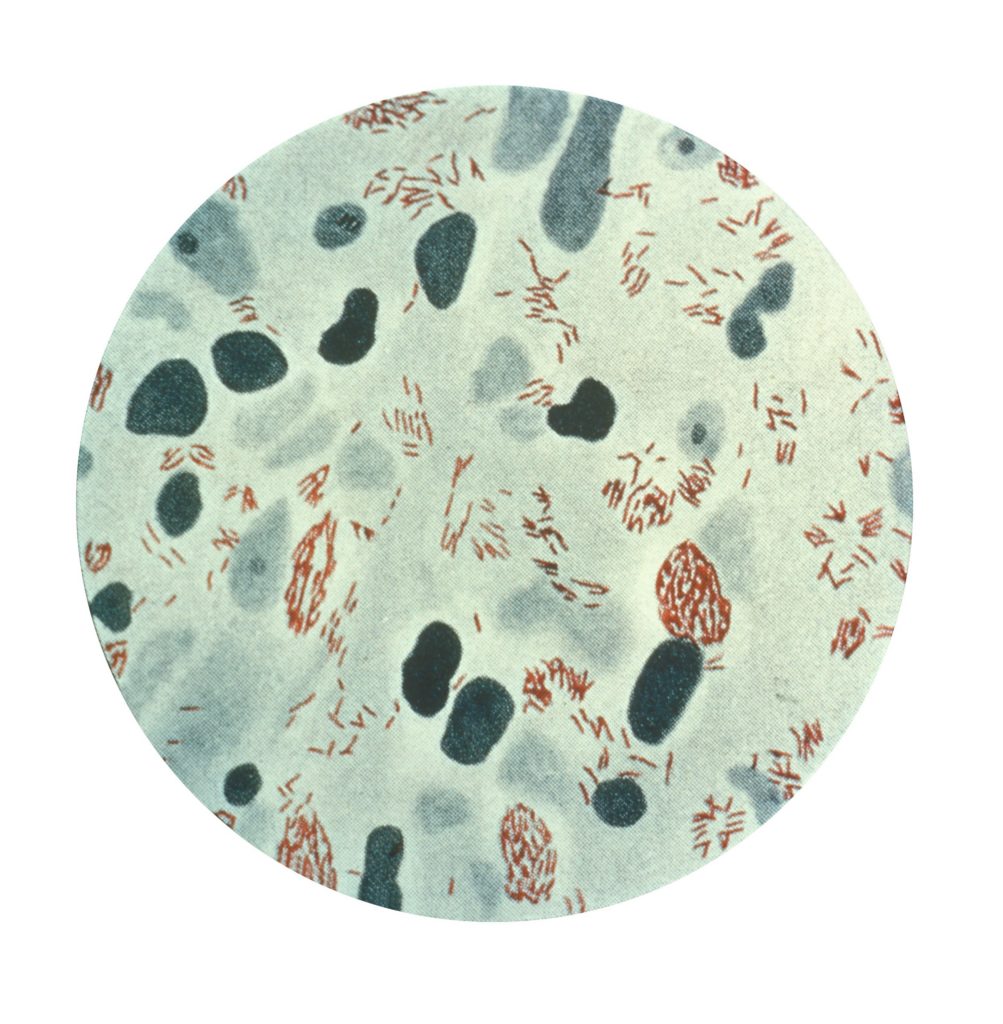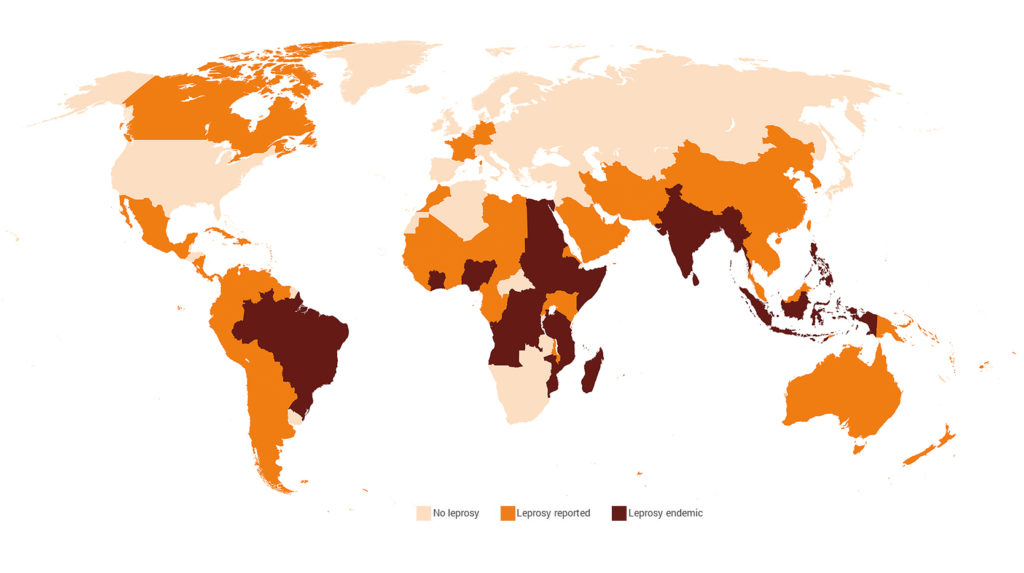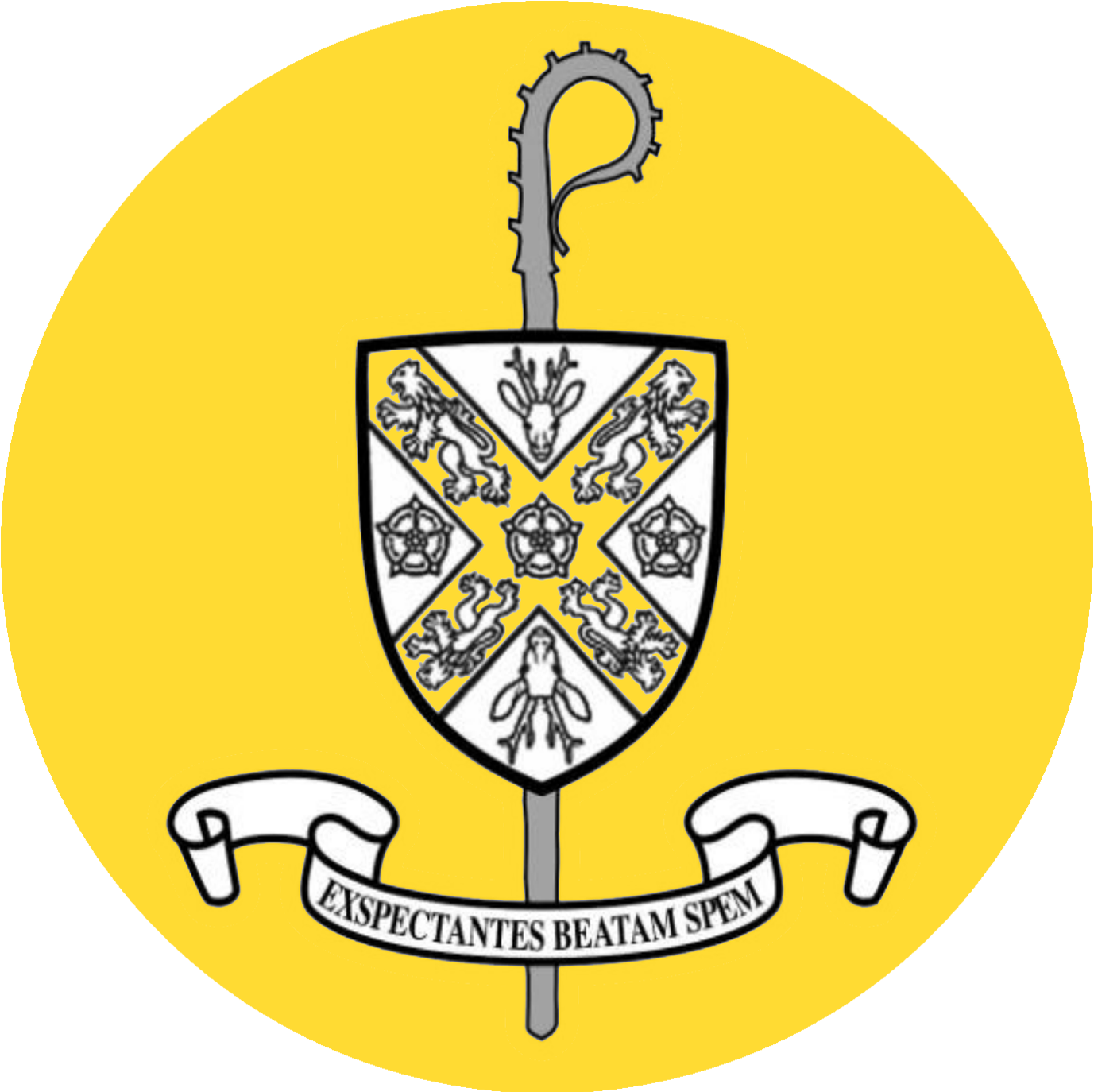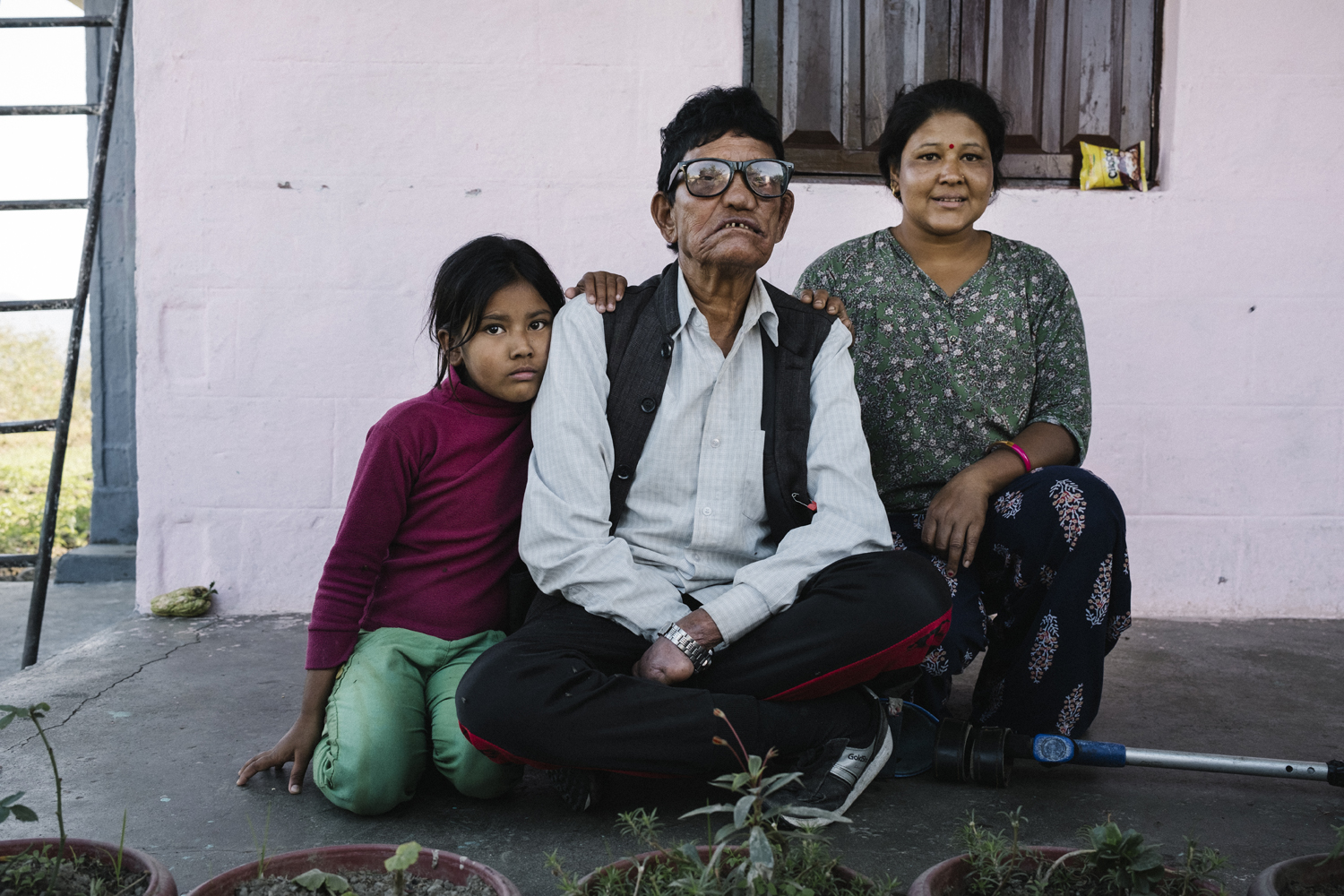In the Gospel this Sunday (October 9), Jesus heals 10 people of leprosy. To coincide with the reading, the St Francis Leprosy Guild tells us more about this terrible disease and the charity’s quest to see it wiped out for good…
We might think of leprosy as a disease of ancient times, which was referred to in the Bible, feared by all and destroyed many lives.
Leprosy is mentioned many times in both the Old and New Testaments. It is described as a scourge, a curse and a terrible affliction requiring cleansing. In Matthew 8:1, Mark 1:40 and Luke 5:12, we read how Jesus cured a man with leprosy. In all three Gospels, the man begged Jesus to cure him and Jesus, filled with compassion for the man’s plight, cured him.
In the Middle Ages, St Francis of Assisi followed in the footsteps of Jesus. As a young man, a chance encounter with a man with leprosy transformed his life forever. He left his wealthy family and comfortable lifestyle and began a new life of poverty. Francis followed what he felt was God’s calling. He rejected money and wealth and preached about returning to God and obedience to the church.
In more recent times, the Roman Catholic priest, Father Damien (1840-1889) now known as St Damien of Molokai, cared for leprosy outcasts on the island of Molokai. He arrived at the settlement on May 10 1873 to find 600 people with leprosy living in impoverished conditions. During his ministry, he shared his life with the community, providing both medical and emotional support. He also built houses, schools, roads, hospitals, and churches. This incredible calling transformed the lives of those living in the community.
Many other notable individuals have dedicated their lives to caring for people with leprosy, including the nurse Kate Marsden (1859-1931) who founded St Francis Leprosy Guild, the philanthropist Raoul Follereau (1903-1997), who founded the leprosy charity Fondation Raoul Follereau and “Mother Teresa of Pakistan”, the physician, Dr Ruth Pfau (1929-2017).
What about leprosy now?
The World Health Organisation recently reported that thousands of adults and children have been diagnosed with leprosy in 2021/2022. Many were diagnosed with visible disabilities such as blindness, clawed hands or lost digits, that will affect their lives forever.
It is readily acknowledged that millions more are undiagnosed, spreading infection within their communities or, living with its life-changing effects such as blindness, clawed hands, or chronic tropical ulcers.
Leprosy causes more disability than other infectious diseases—World Health Organisation
Leprosy is also one of the most stigmatised diseases on earth. A leprosy diagnosis is a life sentence for some, often considered a curse from God and the result of sin. Many people with leprosy are thrown out of their homes and communities or forced to leave their employment, leading to a life of begging.
Leprosy is still a legitimate reason to divorce in some countries. It is also a reason that anyone fearing that they may have caught leprosy, is too frightened to ask for a diagnosis.
Think how often we hear the word “leper” used in a derogatory fashion.
Hundreds of leprosy communities, sometimes referred to as colonies, still exist in remote locations throughout the world where people ostracised by leprosy, live out the rest of their lives.
As Archbishop John Wilson said in his address at St Francis Leprosy Guild’s 125th anniversary Mass in London last year: “If we think leprosy is a thing of the past, then we are sadly mistaken.”
The reality experienced by millions of people today is that leprosy is a disease of modern times, and one that is still destroying lives.
So what is leprosy?
Leprosy is a disease of the nerves which causes a lack of sensation in peripheral parts of the body such as the hands and feet. This lack of sensation leads to unintentional injury, chronic ulcers and if left untreated, clawing of hands and feet, amputation, and blindness.
Is leprosy infectious and how is it spread?
There is a widespread fear that leprosy is a highly contagious disease. In reality, it is difficult to catch and 95 per cent of us are naturally immune. Doctors and scientists are not sure exactly how leprosy is spread, but it is thought through airborne droplet infection such as from coughing and sneezing.
Prolonged and close contact with someone with undiagnosed leprosy, such as between a parent and child, friends, or neighbours, may also contribute. People with depleted immune systems or who have poor nutrition, drink unsafe water, and live with inadequate sanitation are more likely to catch leprosy.
Can leprosy be cured?

A bacterium causes leprosy and, it can be cured by a combination of antibiotics, called multidrug therapy or MDT. MDT is available throughout the world to treat people with leprosy if they can be found and diagnosed. Since the 1980s, more than 16m people have been cured of leprosy.
So why are so many people still affected by leprosy today?
There are many, complex reasons why people catch leprosy today and, even if treated, remain affected by the disease. For example, leprosy is difficult to diagnose at its early stages, before any visible disabilities start to appear. Initially, leprosy shows on the skin as numb patches and is often misdiagnosed as other skin complaints such as eczema or scabies.
Although research is underway, there is no easy-to-use, diagnostic test to diagnose leprosy. The only reliable method is a skin biopsy that needs to be analysed in a laboratory. In some people, leprosy may incubate for up to 20 years before showing any visible signs. This long incubation phase means that undiagnosed individuals may unknowingly spread leprosy within their communities for years.
Unlike some neglected tropical diseases which can be cured by mass drug administration, leprosy is more complex, requiring longer drug treatment, more monitoring and long-term care. People with leprosy who have been cured of the disease and who are no longer infectious, may face considerable resistance from their families or communities and not be allowed to return to their homes.
Where is leprosy found?
It is no surprise, that leprosy is found in some of the poorest countries in the world, sometimes those with a troubled or war-torn past. Brazil, Indonesia, and India account for 80% of people with leprosy, but Angola, Bangladesh, DR Congo, Ethiopia, Madagascar, Mozambique, Nepal, Nigeria, Somalia, South Sudan, Sri Lanka, Sudan, and Tanzania are all endemic for leprosy.
Leprosy is reported in more than 100 out of 195 countries worldwide. That means over half of all countries in the world today have leprosy.

Another tragedy of leprosy is that thousands of children are diagnosed with the disease every year. Of this number, some are diagnosed with visible disabilities, that even with corrective surgery or assistive devices will affect them for life, even if the stigma does not.
How do we care for people with leprosy?
Caring for people with leprosy means treatment with MDT, surgery to improve leprosy disabilities, the long-term treatment of leprosy ulcers, and reintegrating people affected by leprosy back into society.
Without social services in some countries, the provision of care for the elderly affected by leprosy is critical for their very survival. Some leprosy centres care for people affected by leprosy and their families, for their entire lives.
Thanks to the generosity of many people, leprosy centres and communities exist throughout the world to care for people living with leprosy. The doctors, nurses, nuns, and volunteers who work there often dedicate their entire lives or careers to caring for people with leprosy.
Dal Bahadur Pariyar (pictured above) lives at the Lamatara Leprosy Settlement, south of Pokhara in Nepal. Dal has been affected by leprosy since he was five years old.
He said: “I was abandoned when I was very small. I was isolated in a small cottage from the age of eight, where I lived for four years.”
He has had no education and moved to Lamatara about 30 years ago when the small settlement was built. By the time he was diagnosed and treated for leprosy, his eyes, face, hands, and feet were all disabled or affected by the disease.
He has nobody to care for him since his wife died of leprosy two years ago. He needs a walking stick to get around and his eyesight is failing.
“I don’t have limbs,” he says about his lack of fingers, “and my eyes are getting poorer. What will happen to me in a few years’ time? How will I wash, cook, or clean?”
So, will we ever see an end to leprosy?
For us to see an end to leprosy, new strategies have been developed to find and treat everyone with the disease. This so-called active case-finding requires a complex combination of organisation and planning, healthcare skills, data collection and recording to find people who have leprosy, diagnose, and treat them, and their families, friends, and neighbours, and monitor their progress and health over time.
The good news is that if we can find everyone with leprosy, village by village, town by town, city by city, and country by country, we can stop leprosy in it tracks. But we are not there yet, and far too many people are affected by leprosy in the world today.
What can I do to help see an end to leprosy?
Any kind of fundraising would be welcome such as a coffee morning, a quiz, “bring-and-buy” concert, a sponsored run or anything else that your congregation or friends might enjoy. Those funds will help rid the world of this terrible disease. And as always, your prayers would transform the lives of people with leprosy.
After the recitation of the Angelus in St Peter’s Square earlier this year, the Holy Father Pope Francis noted that it was January 30, World Leprosy Day.
This date was chosen by Raoul Follereau, dating back to 1954, and used to increase awareness of leprosy every year.
Pope Francis expressed his closeness to those who suffer from this disease and prayed that they will not lack spiritual support and healthcare.
He said: “it is necessary to work together for the full integration of these people, overcoming any discrimination associated with a disease that unfortunately still affects so many, especially in the most disadvantaged social contexts.”
St Francis Leprosy Guild
St Francis Leprosy Guild (SFLG) is a UK-based Roman Catholic charity that is working towards a leprosy-free world. The charity supports the work of more than 40 leprosy centres, clinics, hospitals, care homes and leprosy-related projects in 13 countries where leprosy is endemic. The charity’s TRACE operating strategy is putting an emphasis on active case-finding – early detection of leprosy followed by treatment with multidrug therapy.
For contact details, questions about leprosy or more information, email
administrator@stfrancisleprosy.org or visit stfrancisleprosy.org.

